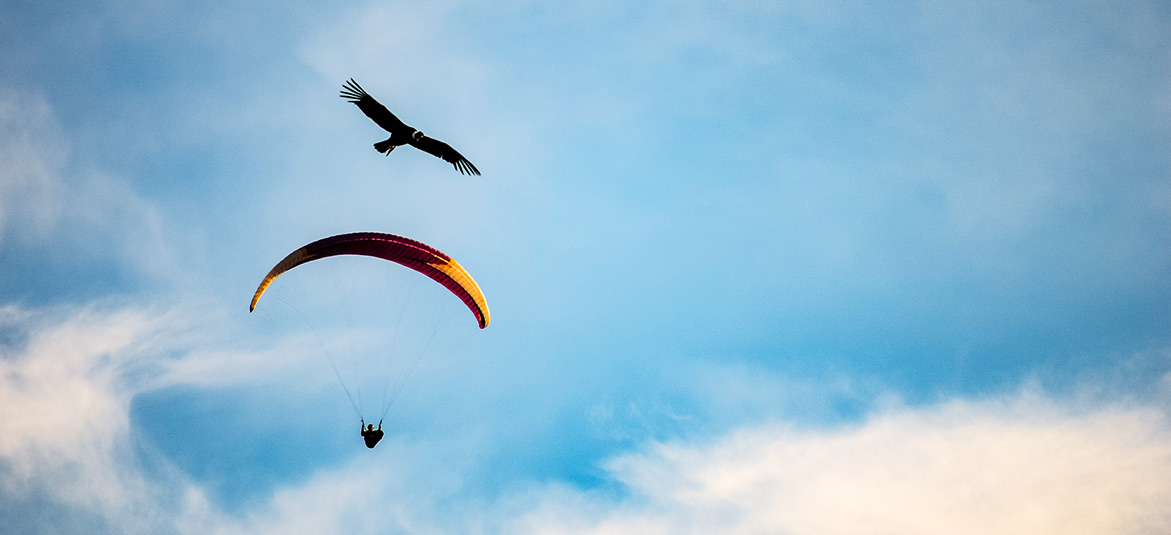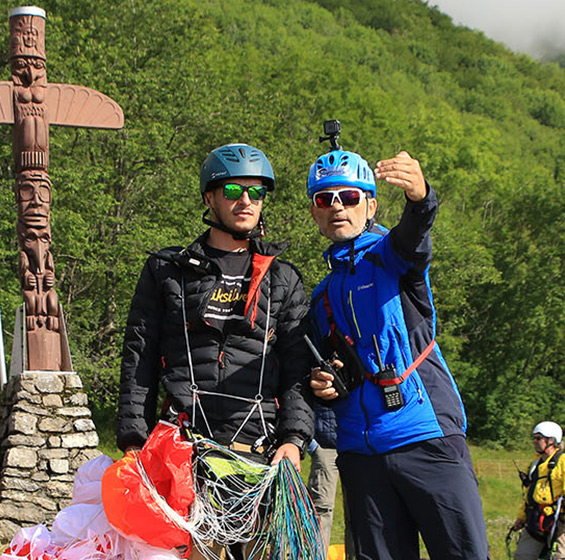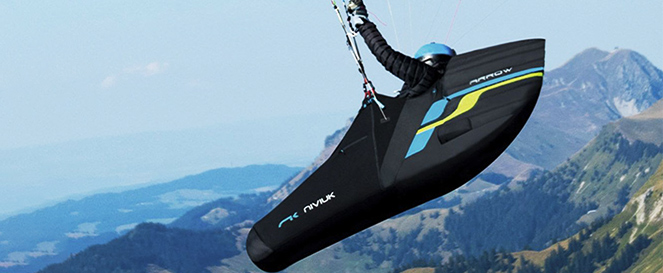Paragliding cross-country flight : how to prepare ?


Venturing into the vast airspace aboard a paraglider is an experience that many pilots are passionate about. A long-distance paragliding flight can last up to 8/10 hours and cover several hundred kilometers ! This requires thorough preparation, both mentally and materially, as well as for the flight itself. Here's how to prepare yourself optimally for this paragliding flight.
MENTAL PREPARATION FOR A LONG-DISTANCE PARAGLIDING FLIGHT
Mental preparation is one of the most important aspects of long-distance and free-flight paragliding. The reason for this ? Paragliding cross-country, though it brings its share of sensations and pleasure, can be testing. This preparation can be carried out during courses at specialized schools.
Physical and mental preparation play a vital role. It's a combination of the pilot's own technical mental preparation, and intellectual preparation based on experience and observation. The latter is often backed up by books dedicated to paragliding, which provide food for thought and help you anticipate unexpected situations. Some of these books, which are well known in France, combine science, piloting techniques and safety management, offering unexpected food for thought.
Pilots must also analyze their own past experiences. After several flights, especially long-distance ones, a pilot accumulates precious pedagogical hindsight. This hindsight is essential for anticipating and managing the various situations that may be encountered on future flights.
Mind you, mental preparation is not a question for cross-country pilots alone.
At any level, and for any flight objective, it's a good idea to make sure beforehand that the pilot is in the right frame of mind to go flying, and if necessary to achieve a specific objective, without compromising safety.
However, on a cross-country flight, this aspect takes on greater importance, as the pilot will, during the course of the same flight, go through gentle stages in which he can relax, and stressful stages due either to difficult conditions, or to frustration at an area that is impossible to extract, etc. In short. Several psychological states can be addressed, and at each moment of the flight the pilot will need to know how to exploit or react to them. That's why cross-country pilots must try to anticipate the strategic moments of the flight when preparing for their flight, so as to be ready for the posture to be adopted.
Anticipating this will enable the pilot to save energy during the flight, which could be used to deal with the unexpected when the time comes.

PARAGLIDING WEATHER AND DISTANCE FLYING : CHOOSING THE RIGHT TIME AND ROUTE
A look at long-distance paragliding would not be complete without a closer look at the weather. The well-informed pilot planning a cross-country flight knows by definition that his flight will depend above all on the possibilities offered by the weather and aerological conditions.
It's well known that the weather can be one of the determining factors in the enjoyment of a flight. For this reason, technical mental physical preparation combined with sound meteorological analysis is essential. Based on their years of experience and observation, experienced pilots are able to make informed choices about the best time to fly and the route to take.
With impeccable piloting technique and safety management, the chances of a successful long-distance paragliding flight are greatly increased. What's more, keeping in mind the key elements of safety and having clear lines of thought can make the difference between a successful flight and a difficult one.
An important point to remember is to adapt the flight to each moment. A well-prepared flight, with a thorough analysis of weather and aerological conditions, never guarantees a definite route. Indeed, on the day of the flight, it's highly likely that you'll have to deal with unforeseen circumstances, which may mean having to adapt your flight and its route, and in the least favorable cases, landing earlier than planned.
PREPARING YOUR EQUIPMENT FOR A LONG-DISTANCE PARAGLIDING FLIGHT
Once your mental preparation is in place, and the weather conditions and itinerary have been defined, all you need to do is choose the right equipment. It's not just a question of having the right equipment, but also of knowing how to use it effectively.
The equipment needed to optimize sailing goes far beyond the simple choice of sail. You'll also need to know how to use the speed-bar properly, your vario etc...
You also need to anticipate natural needs. Eating and urinating during a cross-country flight are not optional. You've probably already heard of pilots aborting a flight because they had to “pee”. Or because their hands are too cold. So it's a good idea to bring along all the necessary equipment - penilex, food, water, warm clothing, etc. - to make sure you don't have to abort the flight for physiological reasons.
Don't overlook the importance of hydration during your flight. This sensation acts as a “submarine”. You may be unaware that you're dehydrated, and the consequence is a clear loss of lucidity, increased fatigue, and sometimes very annoying headaches. That's why it's a good idea to plan well in advance to keep hydrated during the flight.
In conclusion, venturing into long-distance paragliding is a practice that requires preparation, reflection and, at one's level, a minimum of awareness or expertise. Whether it's through reading books, accumulating years of experience or constantly adapting to technology and the environment, every pilot has his or her own way of preparing for these flights. Paragliding is much more than just a sport, it's a science in itself, and those who practice it with passion in France and elsewhere know all too well the joys and challenges it brings.

CONSULT OUR COMPLETE GUIDE TO PARAGLIDING PROGRESSION :
Paragliding, discover and progress : the complete guide to improving your paragliding skills
Progressing in paragliding : how to improve in free flight ?
Cross paragliding : how to learn this type of flight ?
Paragliding Gliders to progress : what equipment should you choose ?
Price of a beginner paraglider : what is the average cost of equipment ?
Paragliding alone : how do you become autonomous in flight ?








